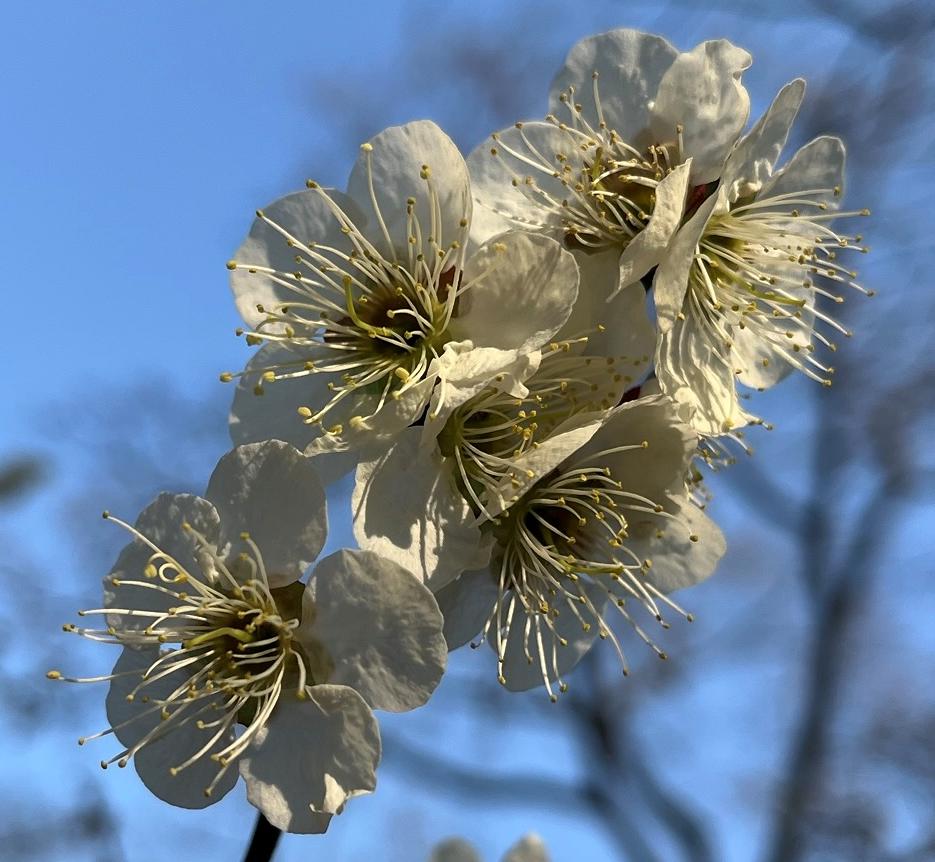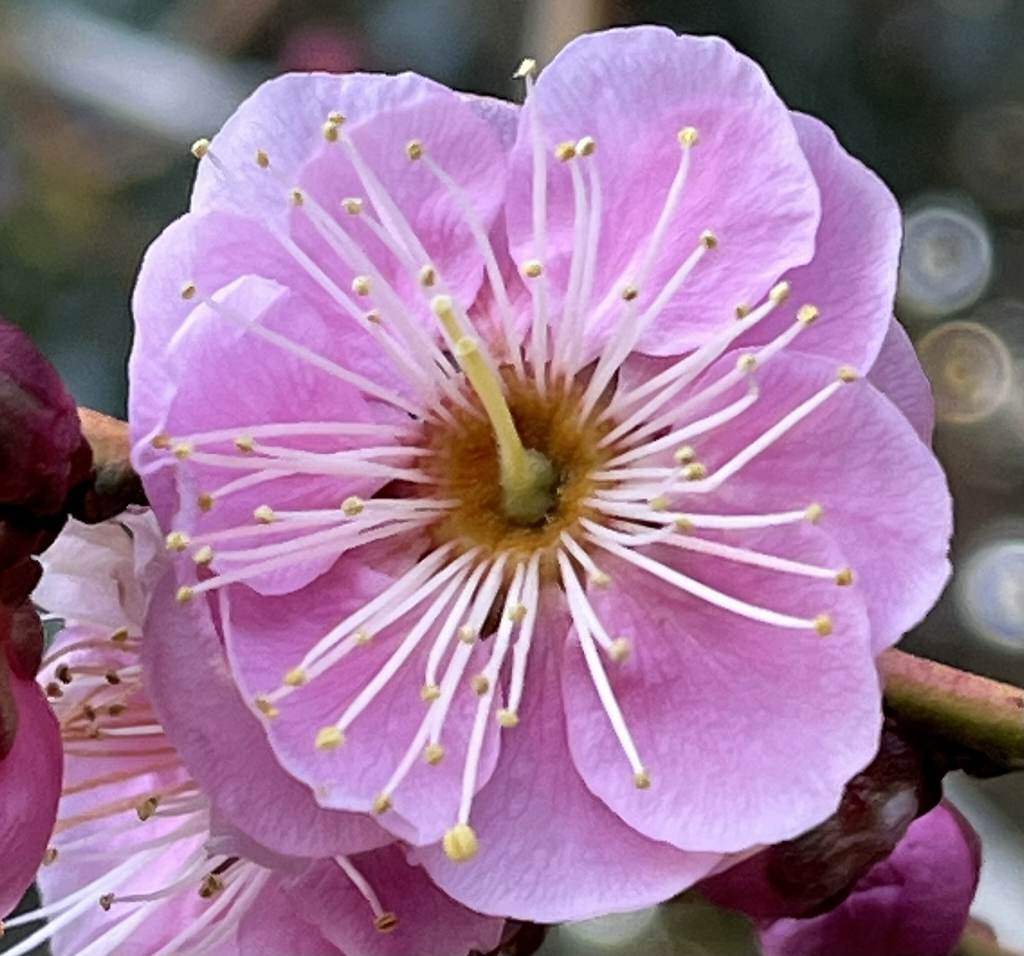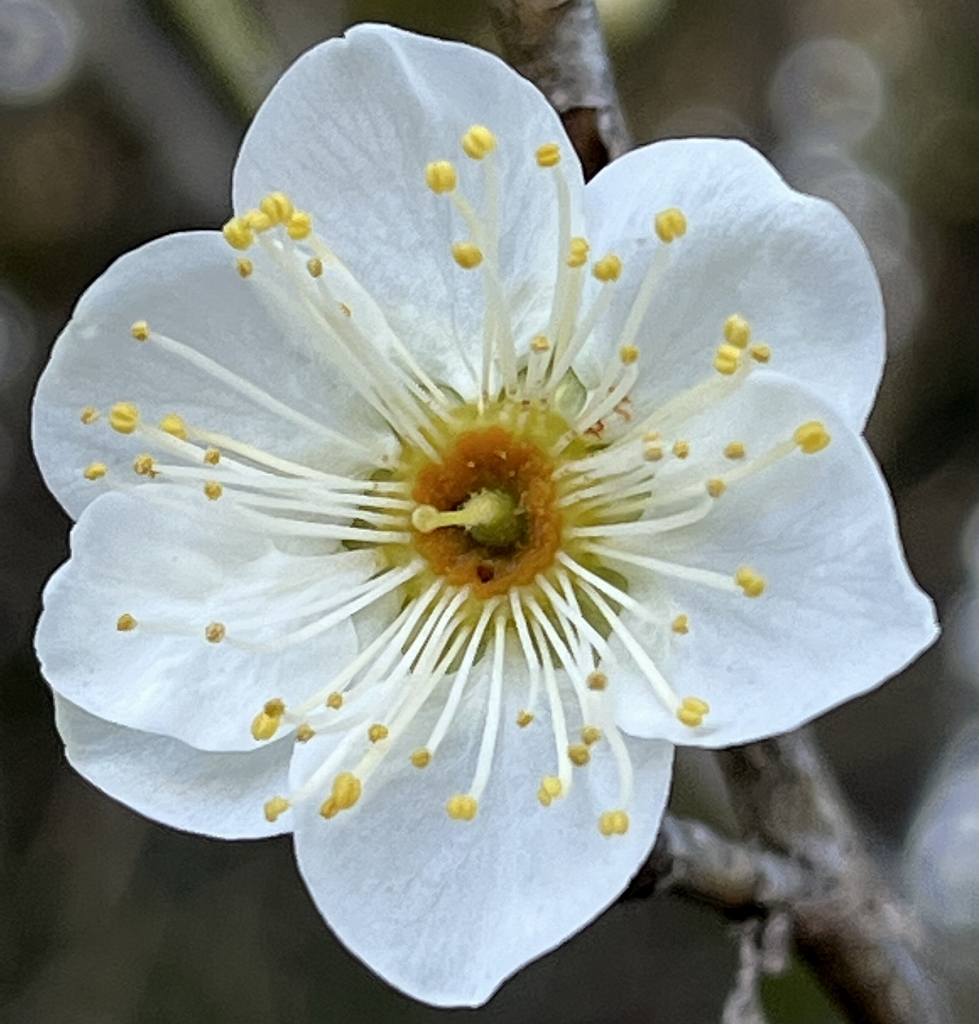ウメは前年枝の葉腋に花芽が着き、葉より先に花が開きます。花弁は5枚。果実は梅干し、梅漬け、梅酒、梅酢、ジャムなどに加工されます。
Japanese apricot have flower buds on the axils of the branches of the previous year, and the flowers open before the leaves. There are 5 petals. Fruits are processed into dried plums, pickled plums, plum wine, plum vinegar, jam, etc.
【仮名】ウメ
【和名】梅
【英名】Japanese Apricot, Plum
【学名】Prunus mume
【誕生】01/ 03, 02/ 01, 02/ 07, 10/ 24, 12/ 27
【開花】01, 02, 03月
【花色】White, Pink, Red
ウメ
ウメの生態

ウメはバラ科サクラ属の落葉高木。原産地は中国で、果実用が「実梅」、鑑賞用が「花梅」とも呼ばれます。さらに樹皮は染色にも利用。日本へは古く弥生時代に渡来し、各地へと広がりました。系統は大きく「野梅系」「緋梅系」「豊後系」に分化。花言葉は「高潔」「気品」です。
ウメの名前

ウメの和名は梅の中国語「メイ」などに由来。メイが古代の日本語では鼻音を重ねて「mme」(ンメ)と呼ばれ、さらに「mume」(ムメ)から「ume」(ウメ)に転じたそうです。学名は江戸時代の発音mumeに由来。英語では「アプリコット」や「プラム」と呼ばれます。
ウメの結実

ウメの花は花弁が5枚。前年枝の葉腋に花芽が着き、葉に先立って開きます。ただし、花は咲いても、同じ品種の花粉では結実しにくい性質があるため、授粉用に異なる品種の混植が必要。観賞用の栽培なら花だけなので問題ありませんが、果実用の栽培で結実しないと困るからです。
ウメの食用

ウメは塩とともに最古の調味料です。「塩梅」という言葉の意味は、もともと塩と梅による味付けのこと。果肉はリンゴ酸やクエン酸、コハク酸などの有機酸を多く含み、強い酸味があります。燻製にして漢方の「烏梅」にするほか、梅干し、梅漬け、梅酒、梅酢、ジャムなどに加工。
ウメの毒性

ウメの未熟果には「アミグダリン」が含まれ、摂取によって体内で有害なシアン化水素が生成されます。摂取量が多いと嘔吐、顔面紅潮、下痢、頭痛など、さらに多いと意識混濁、昏睡が生じ、死に至ることも。摂取量が多くなければ問題ありませんが、未熟果の生食は避けましょう。
Japanese Apricot
Japanese apricot is a deciduous tree of the genus Cerasus in the family Rosaceae. The place of origin is China, and it is also called “fruit plum” for fruits and “flower plum” for appreciation. The bark is also used for dyeing. It came to Japan in the Yayoi period and spread to various places. The lineage is largely divided into “Noume”, “Hiume”, and “Bungo”. The flower language is “noble” and “dignity”.
The name for Japanese apricot is derived from the Chinese word “mei” for plum blossoms. In ancient Japanese, Mei was called “mme” with a nasal consonant, and then changed from “mume” to “ume”. The scientific name is derived from the pronunciation mome of the Edo period. In English it is called “apricot” or “plum”.
Japanese apricot flowers have 5 petals. Flower buds arrive on the axiles of the branches of the previous year and open prior to the leaves. However, even if the flowers bloom, it is difficult for pollen of the same variety to bear fruit, so mixed planting of different varieties is required for pollination. There is no problem if it is cultivated for ornamental use because it is only flowers, but it is a problem if it is not cultivated for fruits.
Japanese apricot is the oldest seasoning along with salt. The meaning of the word “Anbai” was originally seasoned with salt and plum. The pulp is rich in organic acids such as malic acid, citric acid and succinic acid, and has a strong acidity. In addition to smoked and made into the Chinese herbal “smoked plum”, it is processed into dried plums, pickled plums, plum wine, plum vinegar, jam, etc.
The immature fruits of Japanese apricots contain “amygdalin”, and when ingested, harmful hydrogen cyanide is produced in the body. High intakes may cause vomiting, flushing, diarrhea, headaches, and higher intakes may cause clouding of consciousness, coma, and even death. It’s okay if you don’t eat a lot, but avoid eating raw unripe fruits.



